FAST Entry Test 2025-2026: A Comprehensive Overview for Parents and Students
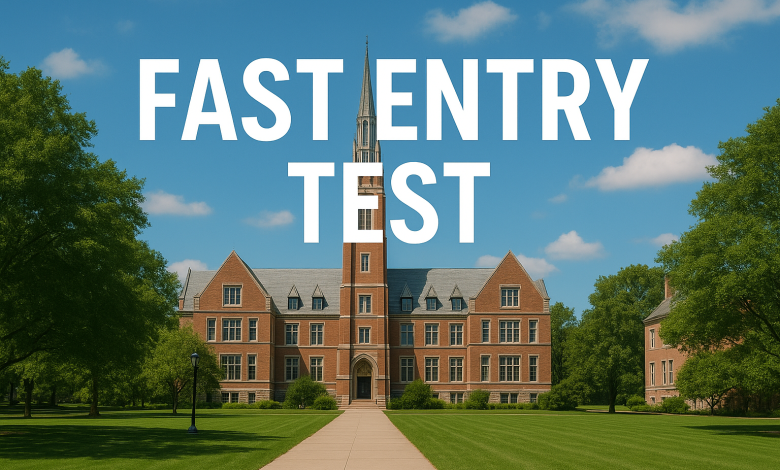
For FAST aspirants who are ready to join the big game – your debut into FAST begins with the FAST Entry Test. Those eyeing Computer Science, Engineering, or Business at FAST-NUCES, this exam is more than a formality, it’s the opening act. It’s the chapter where parents turn into the backstage crew – calming jitters, framing the scene, and marking the direction. No more guessing games – this guide pulls the FAST Entry Test 2025-2026 into one clear picture without smoke or mirrors – dates, eligibility, test pattern, merit rules, syllabus, preparation, and FAQs.
Want in? Pay in answers – the toll is the Entry Test
Far from being an optional noise – FAST Entry Test is the scale that tips merit and chooses who walks into Pakistan’s fiercely contested computing and engineering seats. Its influence can be felt in three specific ways:
- It forms a hefty chunk of your merit score, the piece that can make or break admission.
- It keeps competition fair by judging Matric, FSc, O/A Levels, and IB students on the same grounds.
- It’s the push in the right direction – where a high score opens the gate of admissions and ignites momentum for the years to come.
Bottom line: this test is the ticket to one of Pakistan’s leading universities where every single mark carries weight.
Admission Schedule 2025-2026
Planning always begins with a calendar. FAST has put forward its 2025 admission schedule, and 2026 is likely to follow the same outline.
| Step | Dates (2025) | Notes |
| Online Applications | May 19 – July 4, 2025 | Upload documents, select programs, generate ARN. |
| Entry Test Window | July 7 – July 18, 2025 | Computer-based, held on FAST campuses. |
| Merit List Announcement | July 23, 2025 | Final list based on test + academic record. |
Jot the dates down on your calendar before they slip away before trip over missing documents and full test slots last-minute.

Test Layout and Weightage
Since every test format varies by program, so your prep should bend in step with your balance sheet:
For BBA and BS (Accounting & Finance / Business Analytics / FinTech):
- English: 10%
- Essay Writing: 15%
- Analytical & IQ: 25%
- Basic Math: 50%
Progress here depends on marrying quantitative skill with clear communication.
For BS (Computer Science) and BS (Engineering):
- English: 10%
- Analytical & IQ: 20%
- Basic Math: 20%
- Advanced Math: 50%
For CS and Engineering hopefuls, half the paper is math muscle where Advanced Mathematics does the heavy lifting, so there’s zero room to bluff.
Lines you can’t erase:
- This is a fully computer driven test with separate timings per section
- Negative marking is enforced where every mistake costs marks
- Calculators are banned
Eligibility Criteria
Though the eligibility varies by program and campus, but the core requirements served everywhere are:
| Category | Requirement |
| Minimum Marks | 60% in SSC/Matric (or equivalent) and at least 50–60% in HSSC/FSc (depending on program) |
| Mathematics Requirement | For CS and Engineering, Mathematics at HSSC level is mandatory |
| O/A Levels | Equivalence certificates must be obtained in advance |
| Pre-Medical Students | Eligible for Computing programs if Additional Mathematics is passed/awaiting |
Don’t skip your campus admission page as each program has its quirks, so a minute on your campus’s admission page can spare you last-minute shocks.
Merit Calculation
Merit comes from two sides: entry test performance and your academic trail.
In Engineering programs, FAST goes by PEC’s formula:
- Admission Test: 33%
- HSSC (FSc or equivalent): 50%
- SSC (Matric or equivalent): 17%
In Business and Computing, your merit is stitched from two fabrics: Test score plus HSSC/SSC marks, commonly 50/50, though the balance may vary. Pending HSSC Part-I? FAST may lean on SSC marks, scaling them to fit the criteria.
What matters most? Strong test scores silence the whispers of weaker grades and bad test scores drown even the best transcripts.
The Test Awaits: Application Through Arrival
Applying isn’t a maze, but every step deserves care:
- It begins online. You’ll get an ARN, hold onto it.
- Pay the fee at the designated bank, and only then will you unlock your Admit Card.
- Test day means walking in with your Admit Card. Arrive on time because once the clock strikes, you’ll miss your chance.
- Face the computer-based test, each with its own timer.
- Your results will knock on your phone and inbox, so keep an eye out.
Nothing fancy: Admit Card in hand, careful listening, and good time sense.
Your Syllabus Menu
Hungry for marks? Before you fork into the exam, you’ve got to taste the prep first.
| Section | Topics Covered |
| English | Grammar and sentence correction; Vocabulary (synonyms, antonyms, usage); Reading comprehension |
| Analytical & IQ | Series and sequences; Logic puzzles and reasoning; Data interpretation |
| Basic Mathematics | Algebra, inequalities, linear equations; Geometry and trigonometry basics; Percentages, ratios, averages; Introductory probability and statistics |
| Advanced Mathematics (CS/Engineering) | Calculus (limits, derivatives, integrals); Linear algebra (matrices, vectors); Series and sequences; Differential equations basics; Advanced probability and combinatorics |
The Subtle Art of Preparation
The winning formula is simple: rules by discipline, but creativity knows when to bend them.
- Begin with diagnostics: Shed light on your weak corners instead of discovering them in the exam hall.
- Work in mini sessions: Give each week a theme – algebra one week, calculus the next.
- Practice like it’s the real deal: Do full computer-based mocks under real timing
- Review with patience: Study your slips, then tackle them again after 48 hours.
- Don’t gamble – Negative marking bites if you make bad guesses.
- Consistency wins – Daily steady study beats a desperate cram before July.
Revision for FAST isn’t a sprint that burns you out; it’s a long conversation that takes weeks.
Conclusion
Call it a stage where the timing is strict, every slip subtracts, and mathematics calls the shots – the FAST Entry Test 2025-2026 isn’t conquered by frenzy but by unhurried, unbroken, and unclouded preparation. Parents carry the quiet weight; drawing routines, whispering encouragement, logistics – so students can step into the spotlight. These aspirants must find their own tempo like a cyclist staying upright by pedaling between practice and pause, keeping accuracy from tumbling off.
Need a hand beyond self-study? foriEDU provides expert tutoring that helps transform everyday scattered revision into entry test performance. In the glare of panic, it swells into a mountain; in the cool of planning, it lies flat as a pebble underfoot.
That faraway goal? It’s nearer than nerves would have you believe – so go in ready, and step out with your head held high.
FAQs on FAST Entry Test 2025-2026
- What is the FAST Entry Test?
FAST-NUCES requires a computer-based exam for admission; covering English, Analytical/IQ, Basic Math, and Advanced Math if CS or Engineering is your path.
- What is the test duration?
All told, the exam runs about two to three hours start to finish; every section is timed separately.
- Is there negative marking?
Negative marking is enforced in parts of the test, so accuracy outweighs wild stabs.
- Can calculators be used in the FAST Entry Test?
Calculators are strictly prohibited.
- How do I apply for the test?
The process is simple: apply through the FAST portal, secure your ARN, pay your fee, and print the Admit Card. Remember, tests run only at FAST campuses.
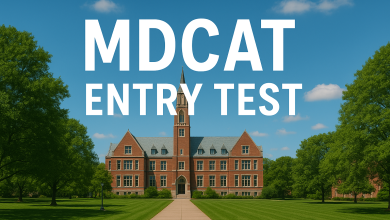
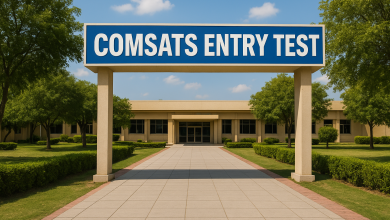
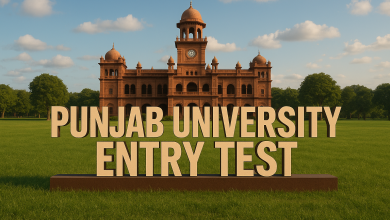
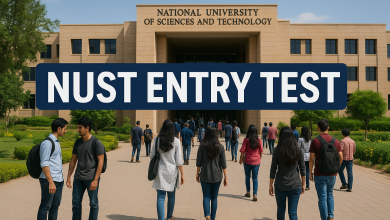
I appreciate how clear and organized this guide is, especially the breakdown of the syllabus. One thing I think would be useful for students is understanding how the merit is calculated beyond just the test score – maybe including some tips for maximizing your chances!